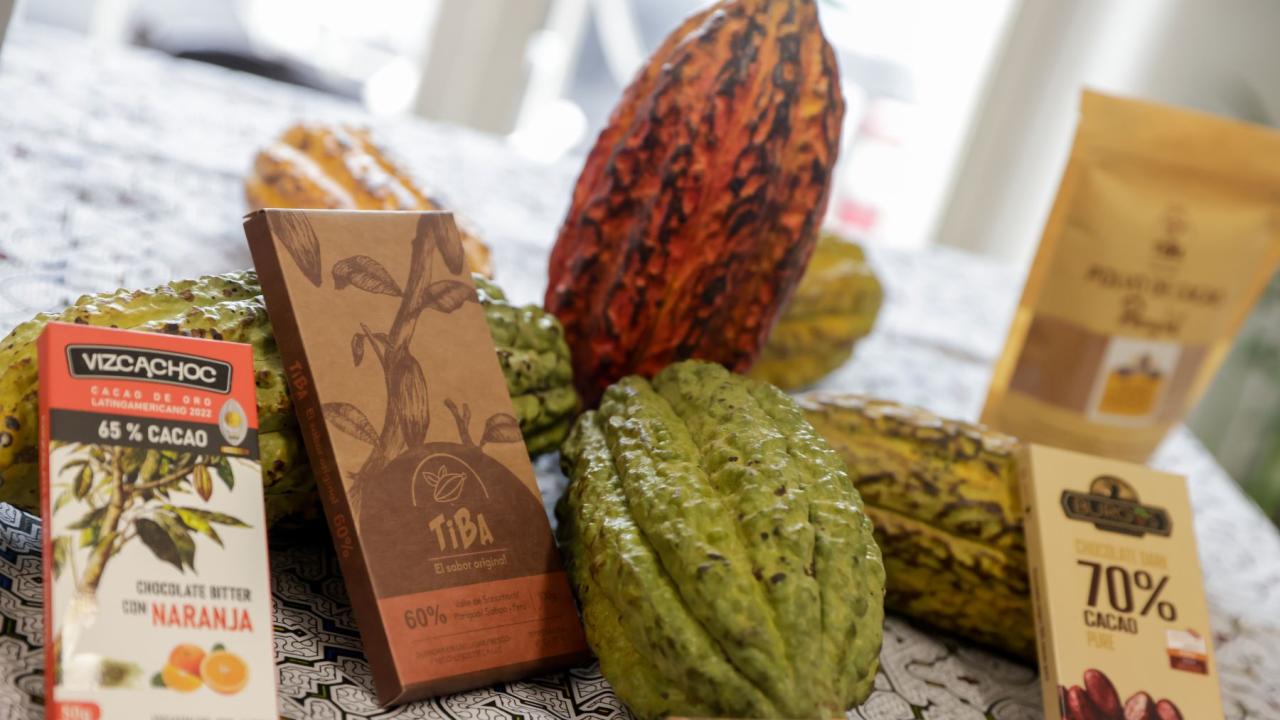
According to the Peruvian Exporters Association, this milestone is a great incentive for agents that form part of the production chain.
In a historic milestone for Peruvian agriculture, exports of cocoa and its derivatives managed to exceed US$ 1 billion in one year for the first time, considering that by the end of 2024 they would have reached around US$ 1.3 billion in shipments.
"We expect the figure to close at nearly US$1.3 billion this year, and it will be the first time in history that we have surpassed US$1 billion; this is a great incentive for all of us in the cocoa chain," said José Antonio Mejía, president of the Coffee and Cocoa Committee of the Association of Exporters of Peru (Adex).
"This is a historic export record, as international cocoa prices rose from US$3,000 to almost US$11,000 per ton, a record price seen in the last year," said a report published today by the newspaper El Peruano .
According to figures from the business association, shipments of cocoa and derivatives reached US$ 1,188 million between January and November 2024, registering an increase of 203% compared to US$ 391 million in the same period of the previous year.
Peruvian cocoa exports, between January and November 2024, were in beans (63%), butter (20%), paste (6%), chocolates (5%), powder (5%) and others (1%).
MAIN MARKETS
The main markets were the United States with US$ 226 million (19% of the total); Malaysia with US$ 158 million (13%); Indonesia with US$ 136 million (11%); the Netherlands with US$ 117 million (10%); Belgium with US$ 86 million (7%), and Spain with US$ 75 million (6%).
“Asia has increased its purchases by almost 30%, mainly Indonesia and Malaysia. The destination of Peruvian cocoa exports is divided between the Asian continent, Europe and North America,” he explained.
WORLD DEMAND
According to the International Cocoa Organization (ICCO), global cocoa production faced unprecedented challenges during 2024, with an estimated record deficit of 374,000 tonnes.
Climate change is emerging as the main culprit for prolonged droughts followed by torrential rains, a combination that has severely affected producing regions, especially in Africa, which accounts for 70% of the world's supply.
According to Wired, in Ivory Coast and Ghana, which produce almost half of the world's cocoa, a combined 47% drop in harvest was estimated, marking the worst record in six decades.
With demand for chocolate consistently outstripping supply for the third year in a row, the cocoa crisis is emerging as a global problem requiring urgent action.
But this adverse situation abroad has been beneficial to Peru, as the price of cocoa has skyrocketed due to the shortage of the grain on the international market.
GOOD SCENARIO
Mejía projected that 2025 will also be a good year for shipments of cocoa and its derivatives. This is due to the poor weather conditions in Africa, which have not yet recovered from the diseases affecting crops in the Ivory Coast and Ghana.
"African producers are not very motivated to improve production. This is the opposite of Latin American producers in Peru, Ecuador and Colombia, who are benefiting from high cocoa prices," he said.
For its part, the Peruvian Association of Cocoa Producers (APPCacao) had highlighted that 2024 would be the year of the cocoa producer because their plots are already highly profitable, due to high export prices.
The agricultural association expects this trend, which is favourable to cocoa producers, to continue for two more years, considering that, starting in the second half of 2024, cocoa export prices will have skyrocketed.
NATIONAL PRODUCTION
The Ministry of Agrarian Development and Irrigation (Midagri) indicated that cocoa production in Peru shows a sustained growth trend.
"In the country we have around 280,000 hectares of cocoa, one of the fastest growing crops in Peru," he said.
The Adex Coffee and Cocoa Committee reported that the national cocoa production volume would have reached 180,000 tons in 2024.
Cocoa cultivation in Peru involves approximately 120,000 producers, who develop their plantations in the regions of San Martín, Ucayali, Junín, Amazonas, Cusco, Madre de Dios, Ayacucho, Huánuco, Pasco, Loreto, Piura, Tumbes and Cajamarca.
“Cocoa is a perfect substitute for coca and many producers are abandoning it to get into cocoa production due to the price and the growth in purchases from the export chain,” said José Antonio Mejía, from Adex.
DATA
- Prices have soared due to a shortage of grain caused by climate problems that have affected global production, which is being taken advantage of by Peruvian cocoa farmers.
- Global consumption of cocoa is closely related to the consumption of its main product (chocolate), which is concentrated in countries with high economic and social development, with the United States, Switzerland, Germany and the United Kingdom standing out as the main consumers of chocolate, in addition to the markets in Asia.
- Consumption trends in these countries are characterized by a growing interest in healthy products, gourmet and original chocolates, thus chocolate consumption directly affects the demand for Latin American cocoa by foreign industries.









